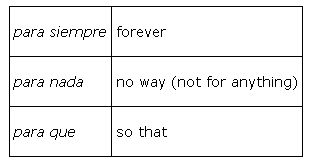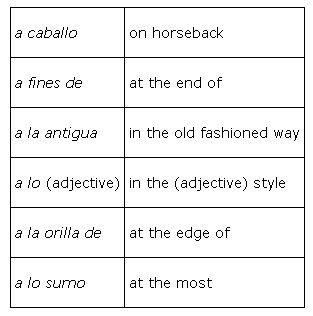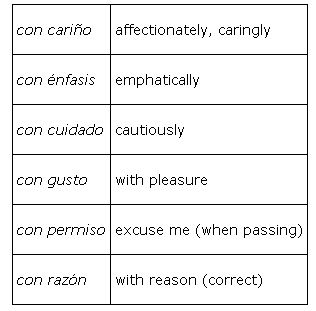A preposition that is composed of more than one word is called a compound preposition. The last word of a compound preposition is always one of the simple prepositions, so compound prepositions are easy to recognize. You will notice that many of the following compound prepositions are formed with a directional word and the simple preposition
de. Remember that if a directional word is used without
de, it is no longer considered a preposition.

One of the most frustrating aspects of learning a foreign language is that often you can look up every word individually, but when you put them together they make no sense. When a group of words has a meaning separate from the individual words of which it is composed, it is called an idiomatic expression. Most idiomatic expressions include at least one preposition. It is important to learn to use the correct preposition in an idiomatic expression because a different preposition can completely change the meaning of the expression.
A lot of idiomatic expressions include the preposition por. You must memorize each expression because none logically follows any of the rules for using por. The following is a list of important idiomatic expressions that include the preposition por.

Here are some idiomatic expressions using the preposition para:

Here are some idiomatic expressions using the preposition a:

Any verb can be used after the preposition a + el (al) in its infinitive form to mean “upon (verb)-ing.”

The following list contains idiomatic expressions using the preposition con:

|
|
|
|
|
|
|
|
|
|
|
|
|
|
|
|
|
|
|
|
|
|
|
|
|
|
|
|
|
|
|
|
|
|
|
|
|
|
|
|
|
|
|
|
|
|
|
|
|
|
|
|
|
|
|
|
|
|
|
|
|
|
|
|
|
|